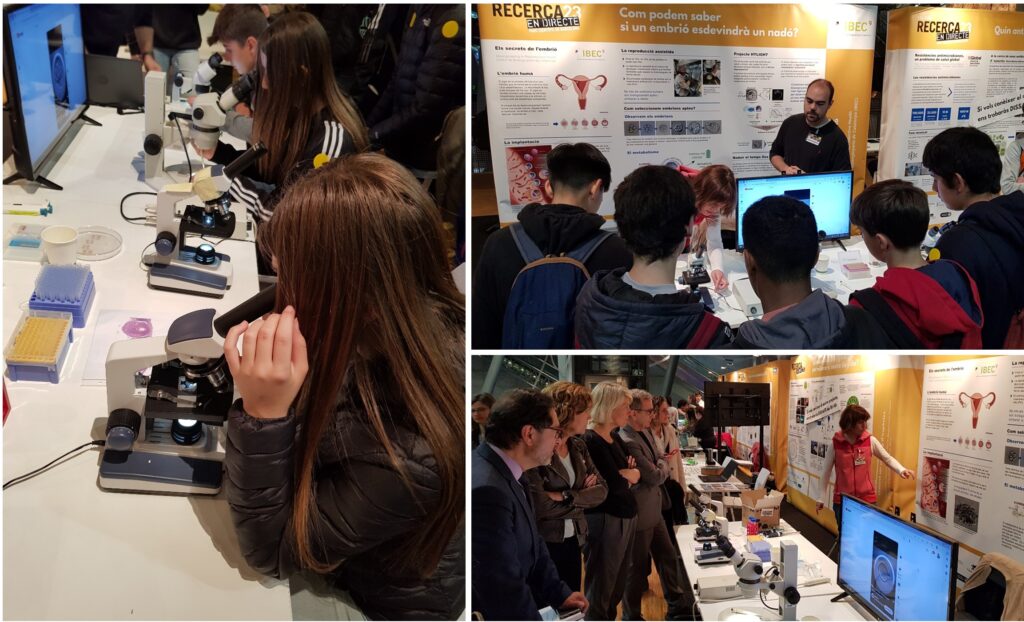During four days, HYLIGHT researchers transmitted the science behind the project to high school students and the general public, in the frame of the XIX edition of the “Fira de Recerca en Directe”, held at the CosmoCaixa Museum in Barcelona.

From 18 to 22 April, several researchers from HYLIGHT explained to high school students and the general public the science behind the project and its objective. The activity took place at the CosmoCaixa, the main science museum in Barcelona. The “Fira de Recerca en Directe” event (live research fair) is based in the commitment of researchers with science dissemination and outreach activities, and attracts every year hundreds of high school students, bringing them closer to real research projects.
The “Fira de Recerca en Directe” is proposed as a taste of research projects that are ongoing on different disciplines with a proximity format, where visitors have the opportunity to talk, face to face, with the research staff, as well as to carry out small experiments with scientific instrumentation. The fair, organized by the “Parc Científic de Barcelona” (Barcelona Science Park) in collaboration with the «la Caixa» Foundation, aims to contribute to the improvement of the scientific culture of our society by bringing the public closer to the research currently being carried out in Catalonia.
This year, more than 2500 people came around to know more about the science being done in different research institutes, and to perform small experiments with real research devices, ask questions and look for answers following the guidelines of the scientific method. From those, 2000 visitors were students from 55 different schools, who had the opportunity to talk to scientists and ask them about their trajectory, getting insights for their professional future.
In this context, HYLIGHT researchers proposed an activity that began with a brief explanation on the human fertilization process, followed by the implantation in the mother’s uterus. Then, they entered in more details on the in vitro fertilization procedures and how an assisted reproduction laboratory works, to introduce the HYLIGHT project. Visitors could learn that this European project is developing a robust and easy-to-use technology to select, in a non-invasive way, the most competent embryos for implantation. Researchers explained that this new diagnostic device combines hyperspectral analysis with artificial intelligence and allows the classification of embryos based on their metabolic profiles.
Afterwards, visitors could see mouse embryo samples at the microscope to observe their morphology and compare their development stages (embryos with 5 days, before implantation; and with 7 days, already implanted in the uterus). There was also a video showing the first five days of a human embryo development. Finally, they could simulate the work done by researchers at the IVF clinics, by pipetting and transferring from one Petri dish to another, small glass beats with the size of real human embryos under a stereo microscope.

The “Fira de Recerca en Directe” is part of the Research in Society program of the Barcelona Science Park, which includes more than 100 activities in which more than 6,500 people participate each year, and has the support of the Spanish Foundation for Science and Technology (FECYT) of the Ministry of Science and Innovation, and the Barcelona City Council.
